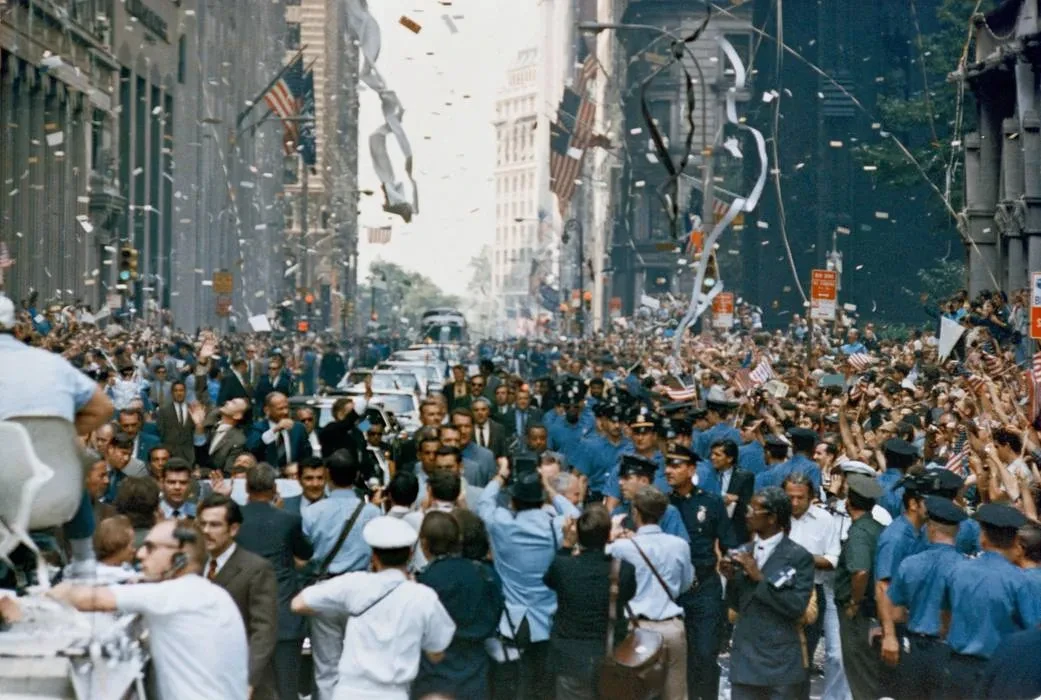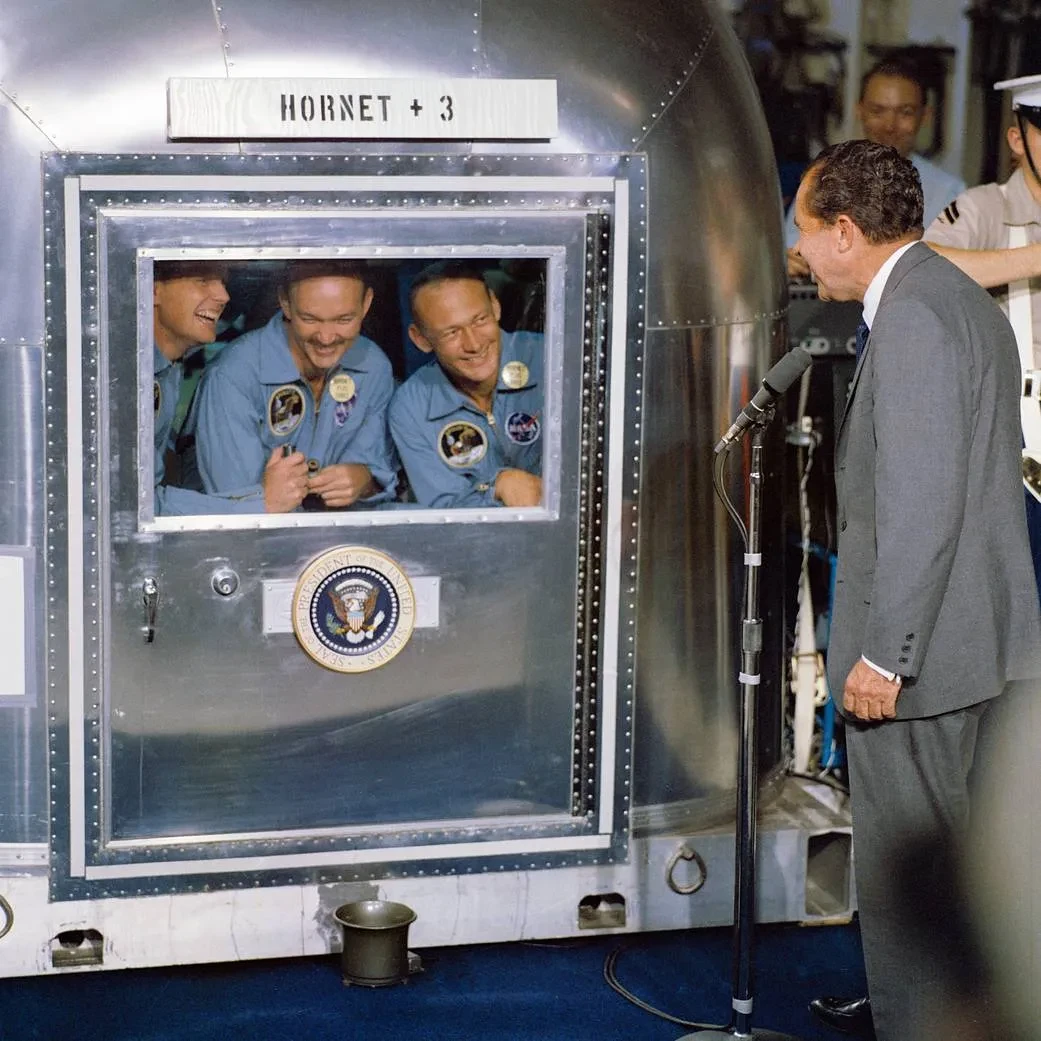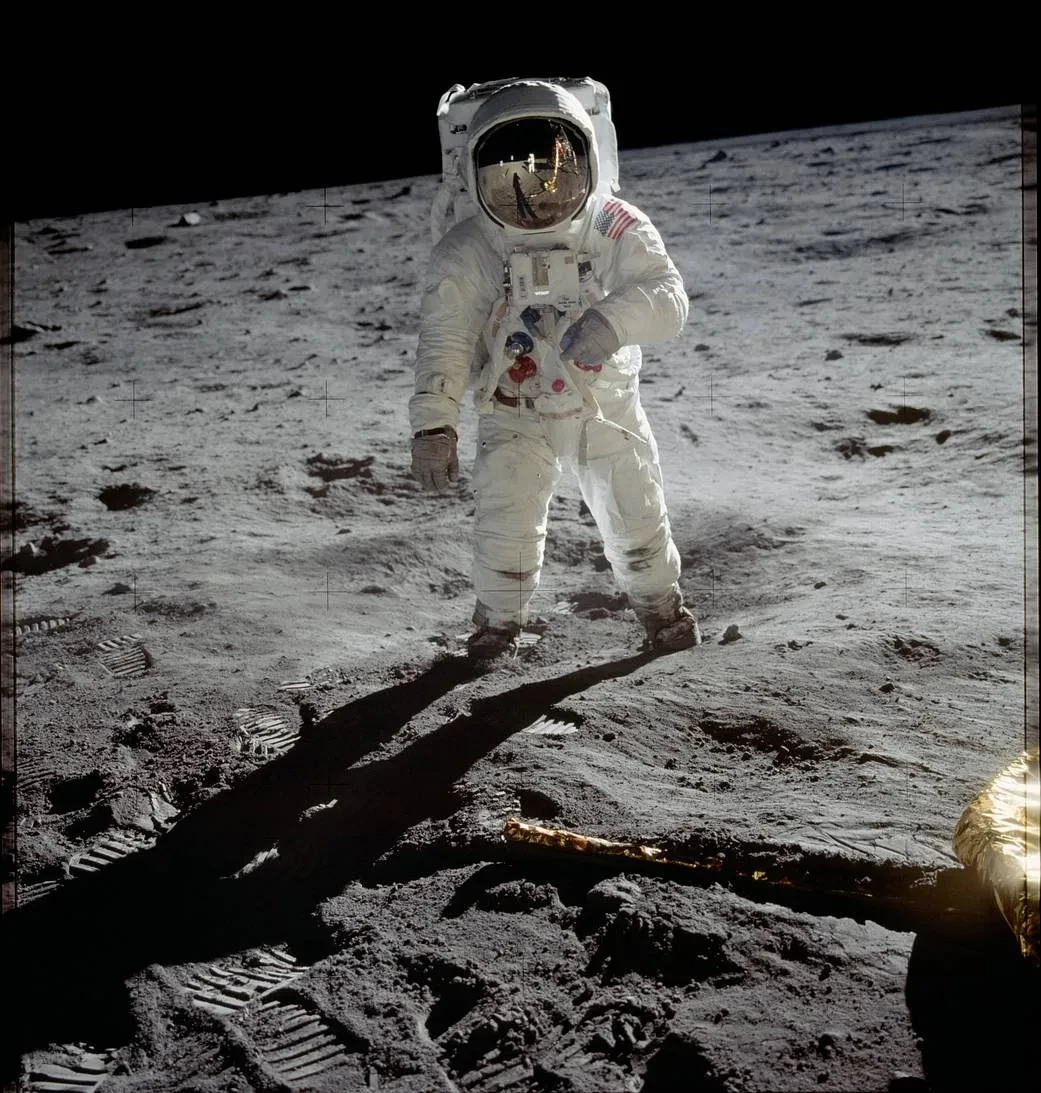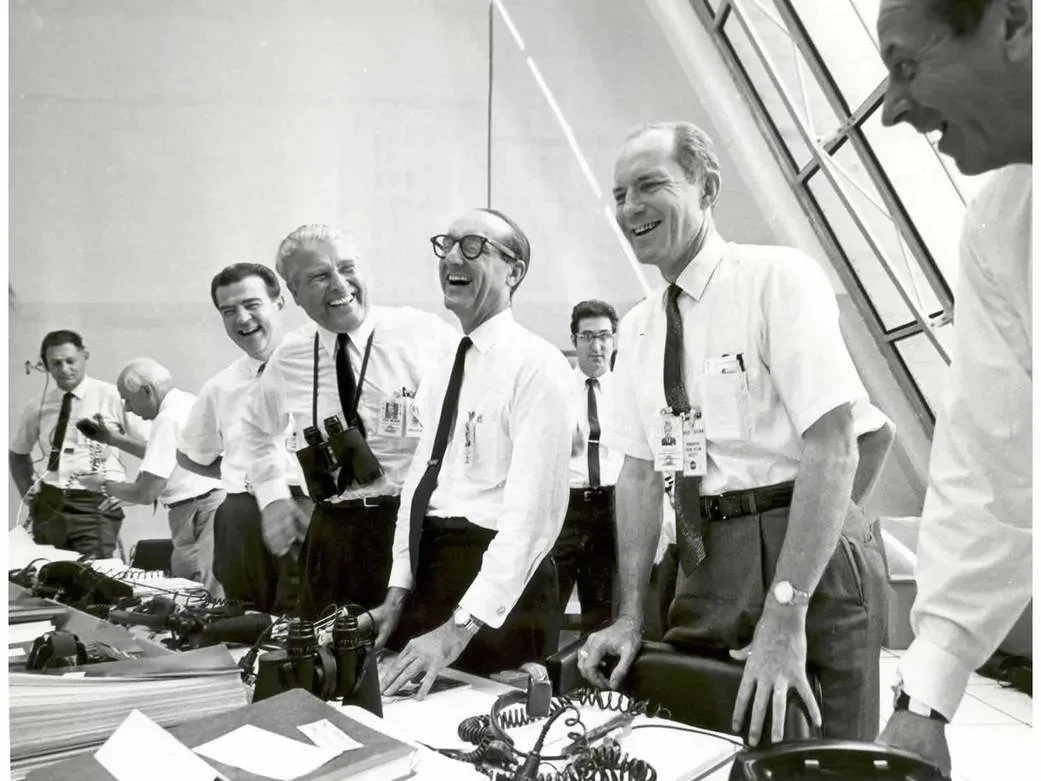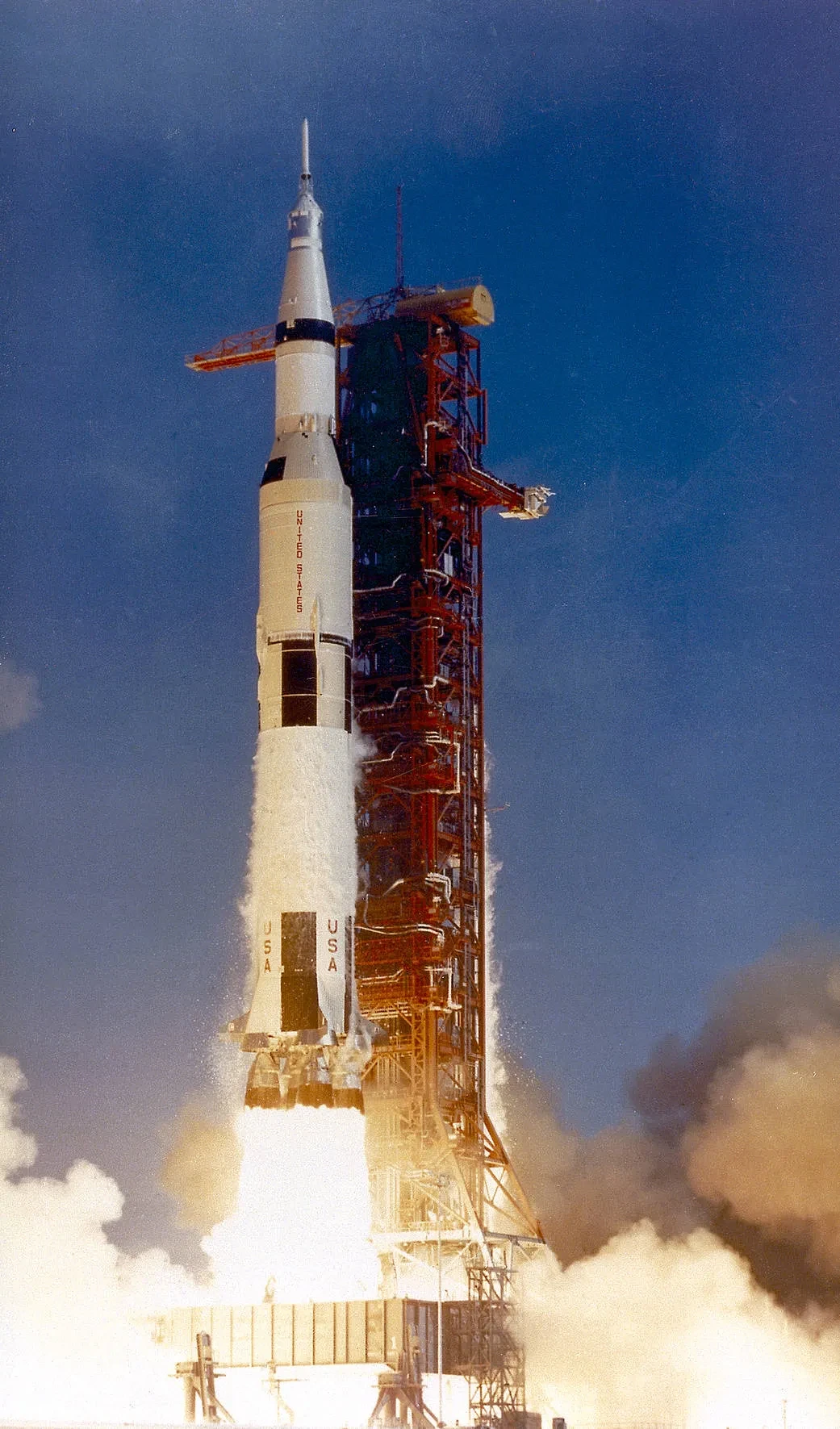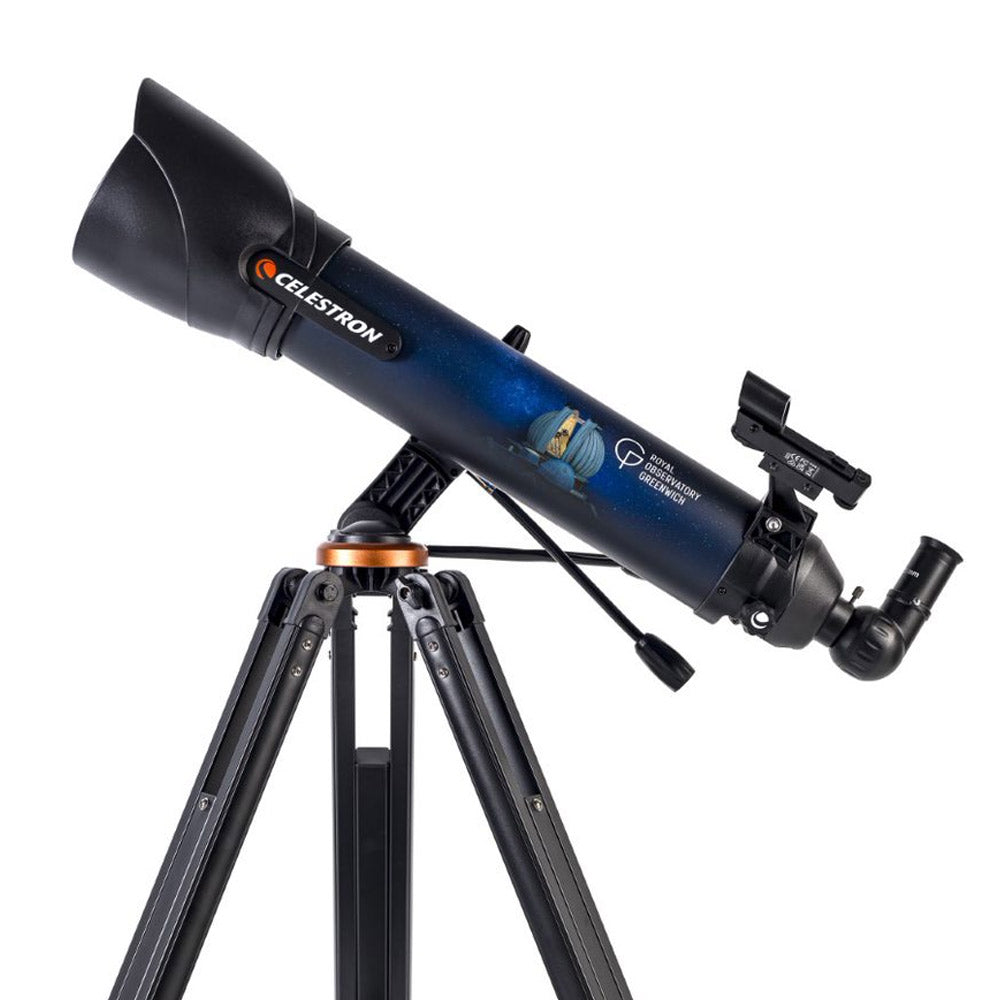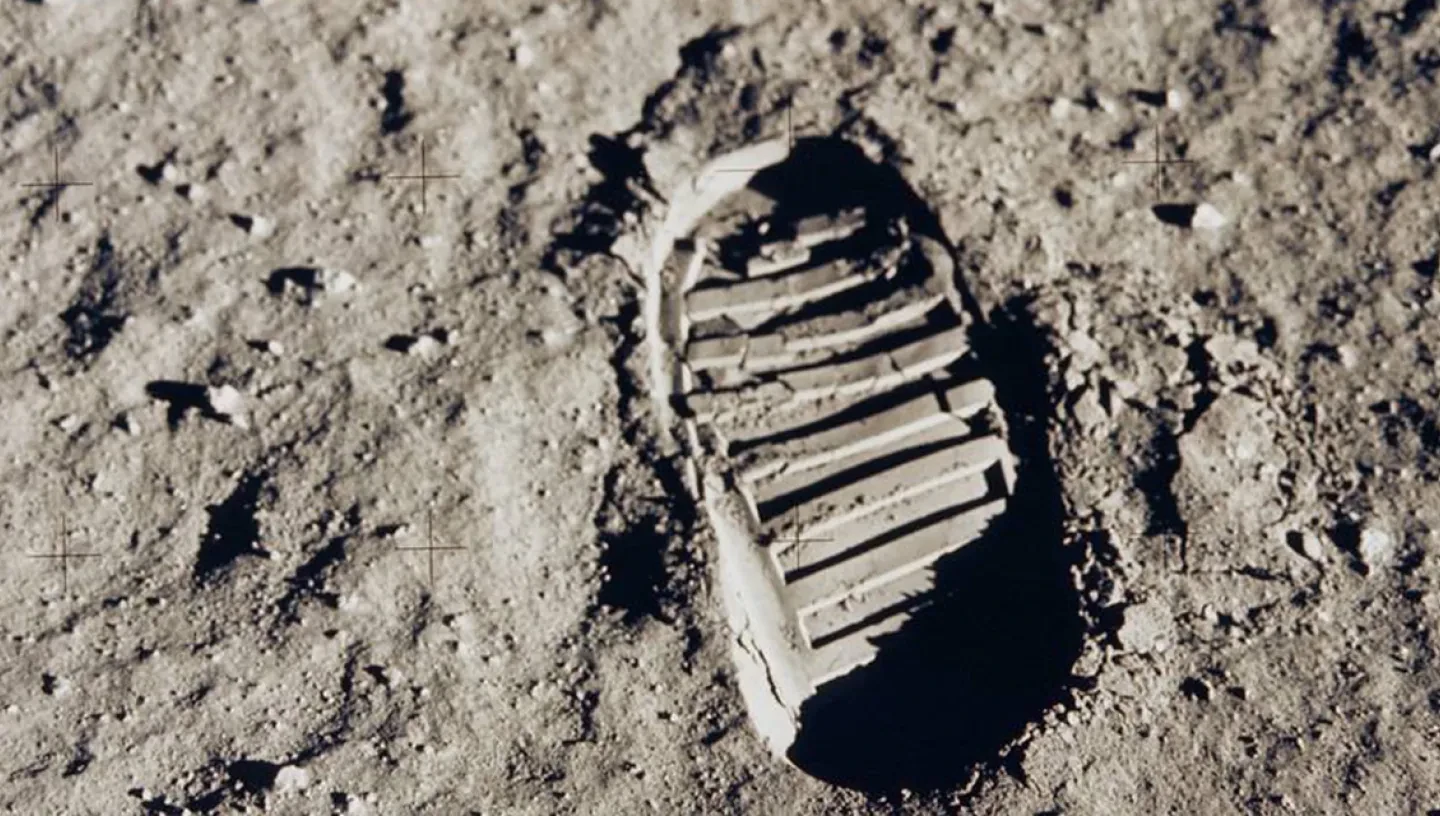
Who was the first person on the Moon?
As the Mission Commander, Neil Armstrong was the first to exit the lunar module, and the first to step on the Moon. His words as he did so were broadcast around the world and are some of the most famous in history.
One small step for man, one giant leap for mankind
Neil Armstrong's first words on the Moon
Who was the second person on the Moon?
19 minutes later Edwin 'Buzz' Aldrin joined Armstrong and became the second man to set foot on the Moon.
Michael Collins stayed on board the command module Columbia, in lunar orbit.
Where did Apollo 11 land?
It took NASA two years worth of studies to come up with five possible landing points on the Moon. They assessed where would be best using high resolution photos of the lunar surface. However upon descending towards the lunar surface, the lunar module Eagle landed west of their planned target point. The Eagle was moving too fast.
Eagle eventually landed on a region of the Moon called the Mare Tranquillitatis, known as ‘the Sea of Tranquility’.
When Eagle landed, Armstrong radioed:
‘Houston, Tranquility Base here. The Eagle has landed.’
The response from Mission Control came with a slight misspeak due to relief that everything had gone smoothly:
“Roger, Twan— Tranquility, we copy you on the ground. You got a bunch of guys about to turn blue. We're breathing again. Thanks a lot."
What time did Apollo 11 land on the Moon?
Eagle landed at 8.17pm UK time (20:17:40) on 20 July 1969 with around 25 seconds of fuel left. If they had been forced to fly for any longer, they likely would have run out of fuel.
The hatch was opened at 11.43pm. At 2:51am on 21 July, Armstrong began his descent to the surface and made history.
The three astronauts on Apollo 11
The Apollo 11 crew consisted of three men.
Neil Armstrong - Mission Commander
Edwin ‘Buzz’ Aldrin - lunar module pilot
Michael Collins - command module pilot
There were three parts to the spacecraft.
The command module, which was the part that would return to Earth and was where the three astronauts spent most of their time. It was known as Columbia.
The lunar module, which was the part that would actually land on the Moon. This was known as Eagle.
The service module, which supported the command module supplying things like oxygen and water.
All three astronauts had previously completed NASA space missions as part of the Gemini space programme. None of them went into space again following Apollo 11.
Apollo 11 facts
The Apollo 11 crew had to go through customs
After landing back on Earth, the Apollo 11 crew had to go through customs - as though they were returning from another country rather than from space. The items they declared included Moon dust and Moon rocks.
Neil Armstrong got the quote wrong
Neil Armstrong had reportedly planned to say ‘One small step for a man, one giant leap for mankind.’ He even claimed that he did say 'a' but that it was inaudible.
The crew were put into quarantine
This was in case they brought back any disease or germs from the Moon.
Buzz Aldrin drank wine on the Moon
The lunar module pilot took communion on the Moon. He did so privately because of a lawsuit against NASA about the broadcasting of religious activities from the Moon.
The crew were well prepared
Neil Armstrong couldn’t afford to take out life insurance in case anything went wrong on the mission. As an alternative, Armstrong, Aldrin and Collins signed hundreds of photographs so that Armstrong’s family could sell them in a worst case scenario.
They had to fill in their expenses
Buzz Aldrin claimed back $33.31 in expenses upon returning to Earth. He claimed for a journey from Houston Texas to the Moon, and back.
Lots of the Moon rocks are lost
Richard Nixon gifted 270 of the Moon rocks brought back from Apollo 11 to the nations of the world. Of these, only 180 are accounted for.
Kennedy saw the Moon landing happen - in a way
As the landing happened, the words that Kennedy had spoken at the beginning of the decade flashed on a screen at the Kennedy Space Centre:
“I believe that this nation should commit itself to achieving the goal, before this decade is out, of landing a man on the Moon and returning him safely to the Earth.”
Followed by:
“Task accomplished”
Apollo 11 Moon landing
The landing of Apollo 11 was not only the culmination of the Space Race, but of years worth of technical and scientific planning and design.
The Apollo 9 and 10 missions also took place in 1969 and were integral to the success of the Moon landing.
Whilst on the lunar surface Armstrong and Aldrin collected Moon dust and rocks to be brought back to Earth. The lunar dust was described as ‘powdery’ and it stuck to the spacesuits of Aldrin and Armstrong. The pair also tested moving around on the surface, experimenting with kangaroo hops and loping to get around.
They ensured that the world knew that it was the USA who had reached the Moon first, by planting an American flag. The hard surface of the Moon and the thin layer of dust meant that the pole was not planted very firmly in the ground. When the lunar module took off from the surface, the exhaust engine caused the flag to topple over.
The astronauts also received a phone call from President Richard Nixon whilst on the lunar surface. Nixon described it as ‘the most historic phone call ever made.’
Apollo 11 launch
The Apollo 11 mission launched on July 16 1969 13:32. The rocket was Saturn V which had launched 13 times from the Kennedy Space Center over six years.
Once they had launched, they travelled for three days before reaching lunar orbit. Once in lunar orbit Armstrong and Aldrin moved into the Eagle, ready to descend to the surface.
When Eagle separated from Columbia to begin its descent, Armstrong reportedly said ‘the Eagle has wings’.
